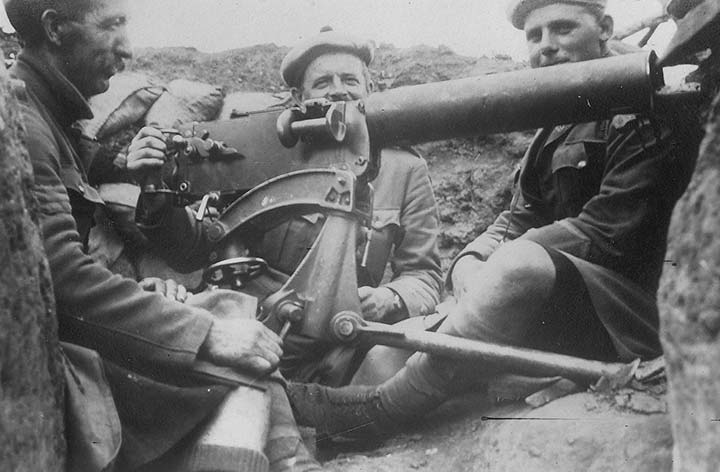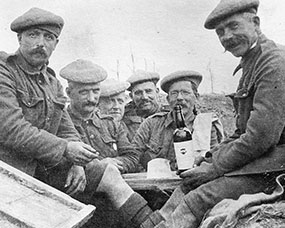Great War Dundee
This is Dundee's story of those that served in the First World War, and of the people left at home
- At the Front
- Dundee’s Own
- Battle of Loos
- Ranks, roles and jobs
- Daily life at the front
- The War at Sea
- HMS Vulcan and the 7th Submarine Flotilla
- ‘Dundee Ladies Drowned.’ U-boats and Surface Raiders
- ‘Every shot was a hit!’ HMS Dundee and the North Sea Blockade
- ‘Engaged submarine with gunfire.’ HMS Perth and the Red Sea Patrol
- Sea Soldiers. HMS Unicorn and the Royal Naval Volunteer Reserve
- North Sea Patrol. Royal Naval Air Station Dundee
- Commemoration. The Roll of Honour and Seamens’ Memorial
- Letters to and from home
- Dundee facts about WW1
- 5 myths of WW1
- Brave Animals
- Cemeteries and memorials worldwide
5 myths of WW1
Myths often stem from an element of truth but as the following 5 myths demonstrate, the truth is often more surprising.
“Most soldiers were killed by machine guns”
Although machine-guns played a pivotal role in both offensive and predominantly defensive tactics, and they undoubtedly took their toll on troops, for example at the Battle of Loos, it was artillery that that caused the most casualties. It has been estimated that two-thirds of all casualties were caused by artillery.

“Gallipoli was fought by Australians and New Zealanders”
Although Gallipolii was the first campaign to really impact upon Australian and New Zealand national consciousness, it was primarily a British campaign and as such a number of Dundonians found their first experience of the war fighting the German-allied Turks in the Gallipoli campaign.
“Everyone hated it”

Surprisingly some soldiers found that they enjoyed the rigours of combat and military life. Others enjoyed the camaraderie and the regular meals, rum rations and cigarettes. As hard as it is to believe, some probably felt better off than they did back home, so long as they were fortunate enough to avoid going into battle.
“Most soldiers died”
According to Dan Snow the myth that most soldiers died should be debunked. Snow cites that in the UK around six million men were mobilised, and of those just over 700,000 were killed. That’s around 11.5%. However this ignores the local effect that the military structure and specific events had on the community. Consider the local 4th Black Watch battalion, also known as ‘Dundee’s own’, which suffered huge losses at the Battle of Loos, with 57% of men being killed or seriously wounded on the first day of battle!
“Soldiers lived in the trenches for prolonged periods”
The First World War is synonymous with trench warfare. However troops were regularly rotated in-and-out of the very frontline trenches (also known as the fire-line trenches that faced the enemy). Different nations had different policies when it came to these rotations. British soldiers spent about 10 days a month in the trench system, and of those, rarely more than three days at the front line.
Picture credits: ...Machine guns were potent weapons... and ...enjoying a bottle of wine... courtesy of The Black Watch Museum
